Highest Hazard Materials Disposed Of At Dounreay
6th August 2016
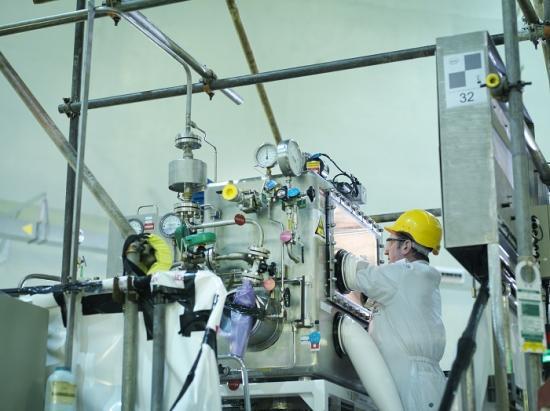
The destruction of one of the highest hazards remaining in the Nuclear Decommissioning Authority (NDA) estate has been completed at Dounreay.
Around 68 tonnes of highly radioactive liquid metal coolant was removed from the Dounreay Fast Reactor (DFR) and safely destroyed over a ten year period. The liquid metal, a blend of sodium and potassium called NaK, was used to remove heat from the reactor's nuclear fuel.
Dounreay used a specially built plant and removal system to safely convert the NaK to hydrogen gas and salt water. Handling the material is a particularly complex technical challenge as it reacts vigorously when exposed to air or water, eventually catching fire. This meant that it had to be kept under a nitrogen gas blanket to prevent reactions.
Reactors Director, Ken Heider of CH2M Hill, said: "The Dounreay team, in partnership with our supply chain, worked extremely hard over a long time to remove and convert the highly radioactive NaK into safe products. Most importantly, our highly skilled team delivered the work safely and in compliance with our environmental authorisations.
Pete Lutwyche, NDA Chief Operating Officer, added: "This was one of the highest radiological hazards in the NDA estate, as well as a significant conventional safety hazard.
"The difficulty of this task can't be understated, and I welcome the news that this work is complete. Everyone involved should be proud of their achievement."
The bulk removal of NaK was completed in 2012 and, since then, work has been underway to remove the last of the coolant from the pipework and base of the structure. This final stage was extremely challenging because the hazardous material was difficult to access.
Detailed technical solutions, including remotely drilling through parts of the reactor, had to be developed. The team also had to work with outdated original drawings which, as the reactor had been modified over several decades, did not give a full reflection of the plant they were working with.
It is the latest achievement at Dounreay as work progresses on one of Europe's most complex closure programmes. Focus now turns to the removal of around 1,000 breeder elements still in the DFR reactor vessel. This must be completed before cleaning and removing the reactor and its nine kilometres of cooling pipework.
DSRL operates under contract to the Nuclear Decommissioning Authority (NDA) and is a wholly-owned subsidiary of the Cavendish Dounreay Partnership Ltd (CDP), a consortium of Cavendish Nuclear, CH2M and AECOM. It is funded by the NDA to deliver the Dounreay site closure programme.
To find out more about CH2M Hill see their web site at www.ch2m.com
Related Businesses
Related Articles
TAE Technologies and UKAEA partner to commercialise fusion tech
Joint venture to develop neutral beams for fusion and non-fusion applications, creating high-skilled jobs and establishing a critical supply chain. TAE Technologies, a leading US private fusion energy firm with over 25 years at the forefront of scientific innovation, today announces a bilateral and reciprocal investment commitment with the United Kingdom's national fusion laboratory, the UK Atomic Energy Authority (UKAEA) to commercialise TAE's proprietary particle accelerator technology for the global market.
Buried Hazards, Unfinished Business - What the NDA's 2025 Progress Report Really Tells Us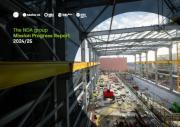
The Nuclear Decommissioning Authority (NDA) has released its 2025 Mission Progress Report is a slightly sprawling document chronicling one of the UK's most complex environmental undertakings. The safe dismantling of its early nuclear legacy.
New recruit officers join the Civil Nuclear Constabulary
The Civil Nuclear Constabulary (CNC) welcomes its newest recruits. The CNC hosted two passing out parades for the graduating Authorised Firearms Officers (AFOs) of Initial Foundation Programme (IFP) 106.
Dounreay's next generation of talent honoured by apprentice award
Nuclear Restoration Services Dounreay's Kate Thomson has won Modern Apprentice of the Year at the Highlands & Islands Apprenticeship Awards in Inverness. Kate, who is in the second year of her apprenticeship in commercial and quantity surveying, said she was thrilled by the honour.
Taskforce calls for radical reset of nuclear regulation in UK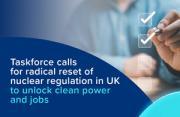
Nuclear Regulatory Taskforce publishes final report and calls for radical reset of overly complex nuclear regulatory system. An overly complex nuclear regulatory system has contributed to the "relative decline" of the UK's ability to deliver faster and cheaper nuclear projects.
NDA working with private developer to accelerate Chapelcross Hub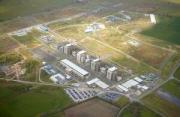
The NDA group has announced it's working with CX Power as the strategic developer to support the delivery of the green energy hub masterplan at Chapelcross. The Nuclear Decommissioning Authority (NDA) group has announced it's working with CX Power as the strategic developer to support the delivery of the green energy hub masterplan at Chapelcross, a programme set to transform the region.
Funding approved for Wick Harbour port consultant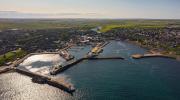
A specialist ports consultant has been appointed to develop a long-term strategic plan for Wick Harbour Authority (WHA) in Caithness. WHA has secured £47,775 from Highlands and Islands Enterprise (HIE) and the Nuclear Restoration Services, NRS Dounreay towards the cost of the services.
NDA announces £1 million funding to accelerate clean energy in West Cumbria
NDA announces £1 million investment to develop masterplan for clean energy development on land adjacent to Sellafield. The Nuclear Decommissioning Authority (NDA) has announced today it's investing £1 million of funding to develop the masterplan for a clean energy development on land adjacent to Sellafield, known as Pioneer Park.Fallon Campbell From Melvich Near Thurso Named As Apprentice of the Year At Awards In London
Rising star from North Scotland honoured at event to celebrate brightest and best in industry. An electrical apprentice from North Scotland is celebrating after being recognised for her contribution to industry at the 13th annual Engineering Construction Industry ECI Training and Development Awards in London.
The NDA Group Graduate Programme: more than a job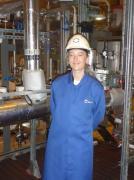
The NDA group graduate scheme offers far more than just a stepping stone into the nuclear industry; it's a chance to grow professionally, explore new places, and become part of a supportive community. Nuala Ledward, Assurance and Performance Graduate, shares how her secondment to Dounreay brought these benefits to life.
